There are many iconic images of World War II. One of them is a 1943 photograph of women and children exiting a bunker during the Warsaw Ghetto Uprising with their hands raised in surrender led by a little boy. Off to the side, holding his machine gun on them, stands SS–Rottenführer Josef Blösche. He was serving as a policeman in the Warsaw Ghetto during the monthlong uprising and according to post-war testimony, carried out his daily duties with such cruelty that Blösche earned the nickname, “Frankenstein.” It also earned him the death sentence twenty-six years later.
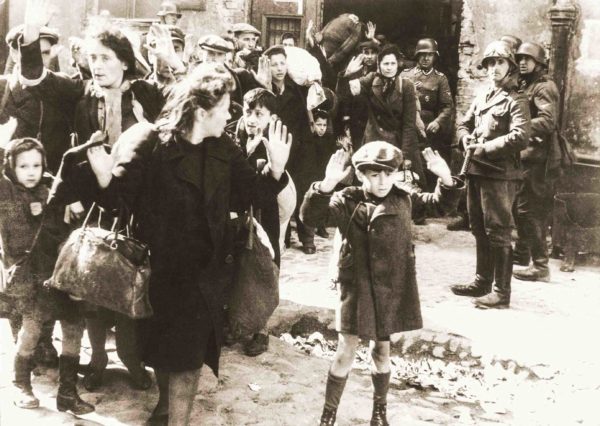
Did You Know?
Did you know that the last person executed in the Tower of London was a Nazi spy named Josef Jakobs (1898-1941)? Parachuting into England on 31 January 1941, Jakobs was immediately arrested by the Home Guard. They knew he was coming because the authorities had been tipped off by a double agent working for British intelligence under Operation Double Cross [Read The Double Cross System here]. Found guilty of spying, Jakobs was executed by a firing squad (he was condemned as an enemy combatant and therefore, not hanged). Jakobs’s granddaughter, Giselle Jakobs, began researching her grandfather’s story in the early 1990s. As classified documents were released to the U.K. National Archives, Giselle was able to piece together the story of Josef’s life including his allegiance to Nazi Germany. It was not a pretty story, but it did provide some sort of closure for Giselle as well as for her father, Josef’s son. Her book, The Spy in the Tower: The Untold Story of Joseph Jakobs, the Last Person to be Executed in the Tower of London is available through Amazon.com.
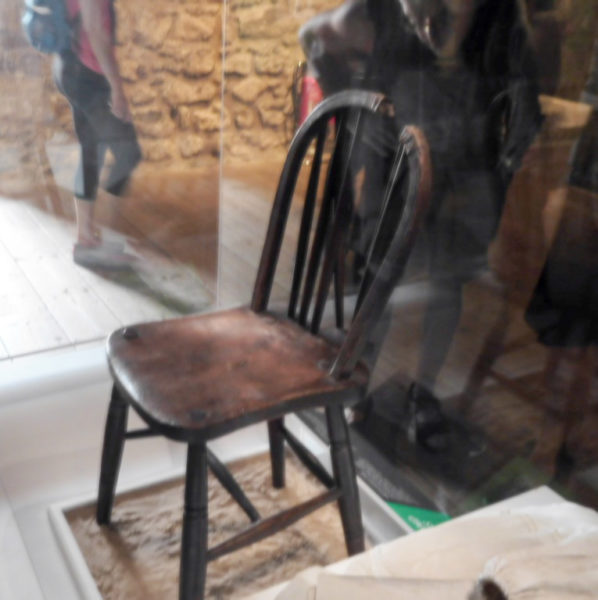
The Warsaw Ghetto
Prior to World War II, a quarter of Warsaw’s population were of the Jewish faith. Immediately after the German invasion in 1939, Polish Jews were subjected to the Nazi anti-Jewish laws. In November 1940, the Germans established the Jewish ghetto in Warsaw, and it became the largest ghetto in any of the Nazi occupied countries. More than 400,000 Jews were required to live within the 1.3 square mile area surrounded by a ten-foot-high wall topped with barbed wire. The actual size of the ghetto decreased over time as the population declined due to deportations, executions, and death through disease or starvation along with the deliberate destruction of the ghetto by the Nazis. Beginning in the summer of 1942, approximately a quarter million of the Jews living in the ghetto were rounded up and deported fifty miles to the northeast of Warsaw to the Treblinka extermination camp.
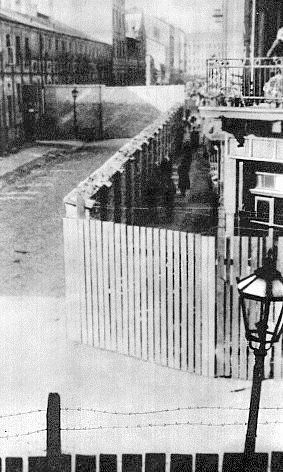
By October 1942, Mordechai Anielewicz (1919-1943) organized the underground Jewish Combat Organization to fight the Nazis against any further deportations. By then it was clear to the residents of the ghetto that Jews were being sent to their immediate deaths rather than “relocated” as the Nazis told them. Weapons, ammunition, and supplies began to be collected by the resistance. On 18 January 1943, the Germans began the next wave of roundups in the ghetto. This time when the SS marched in, they were met with bullets and Molotov cocktails.
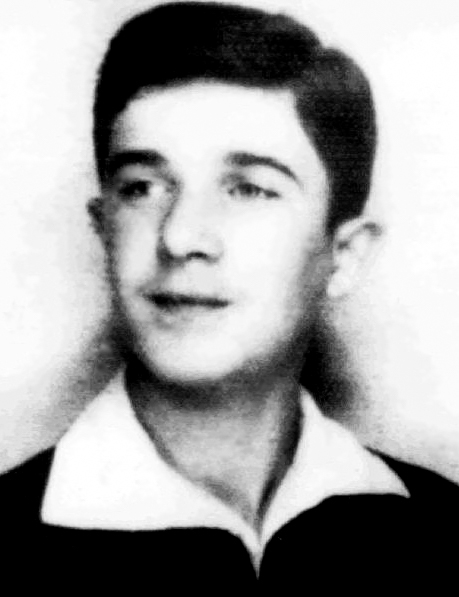
The Warsaw Ghetto Uprising
The Jewish resistance fighters entered bunkers, built command/fighting posts, and began executing Jewish collaborators. Attempts by the Nazi commander, Ferdinand von Sammern-Frankenegg (1897-1944), to control the situation failed. He was considered unfit to liquidate the Jewish ghetto and the head of the SS, Heinrich Himmler, removed his commander and had him court-martialed. Watch a video clip on the Warsaw Ghetto Uprising here.
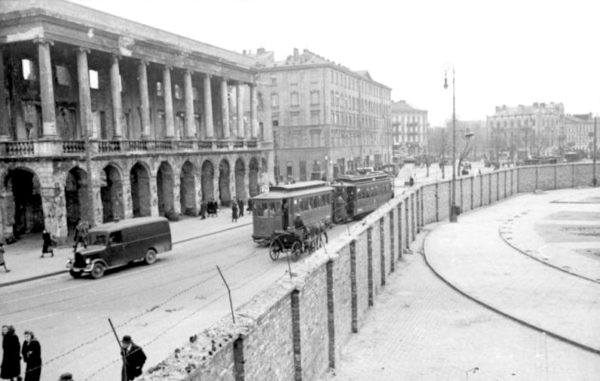
On 17 April 1943, General Jürgen Stroop replaced von Sammern-Frankenegg and two days later, ordered two thousand SS troops to enter the ghetto for the purpose of rounding up the Jews for deportation to the extermination camps. It was called the Grossaktion or, “Great Operation” and it represented the final major battle of the uprising. The Nazis were attacked by 750 resistance fighters and the SS suffered many casualties which resulted in Stroop ordering a retreat. He then ordered the ghetto’s buildings to be destroyed by fire. As the fires spread, the ghetto occupants emerged from hiding and were either executed on the spot or rounded up and deported to Treblinka. Although the resistance fighters continued to fight, by 28 April most of the fighting had ended. On 8 May, the last fortified bunker was cleared by the Nazis using poison gas (bunker was a term the Germans used for the fortified cellars in the ghetto’s residential buildings). On 16 May, the fighting stopped, and Stroop pushed the detonation button to blow up the Warsaw synagogue. Destroying the synagogue and leveling the ghetto was Stroop’s message to his superiors and the world that he had won.
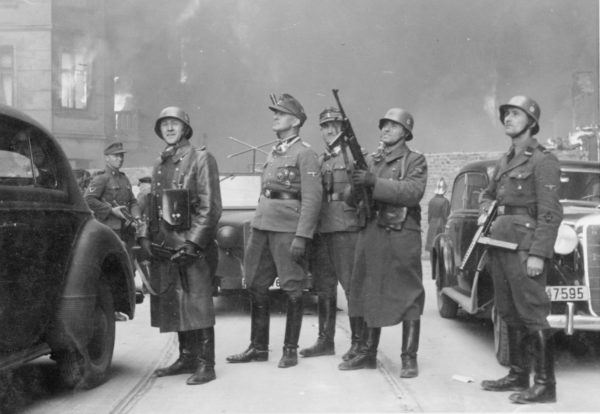
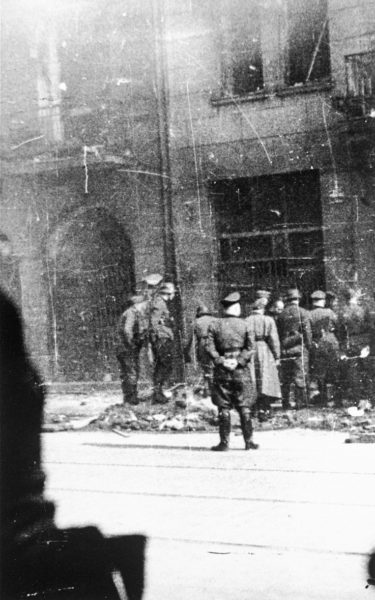
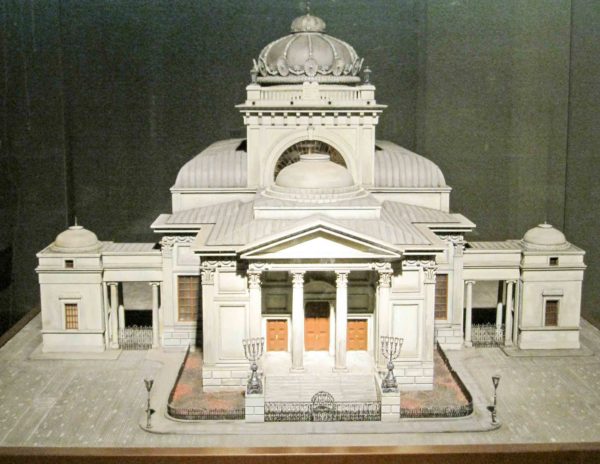
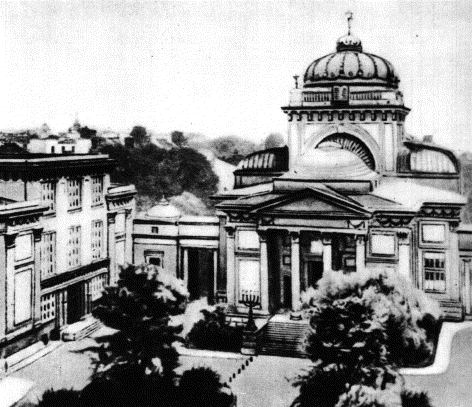
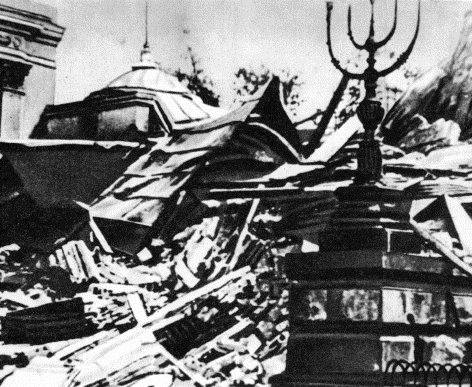
When it was all over, 56,065 Jews had been flushed out and caught. Twenty-five percent of them were executed by Stroop’s troops while six thousand perished in the shelling or fire. The rest were deported. Only approximately one hundred Jews from the Warsaw Ghetto survived the war. Three hundred Germans were killed during the uprising.
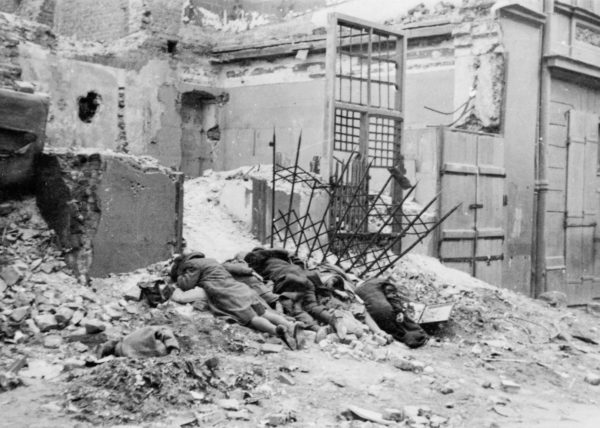
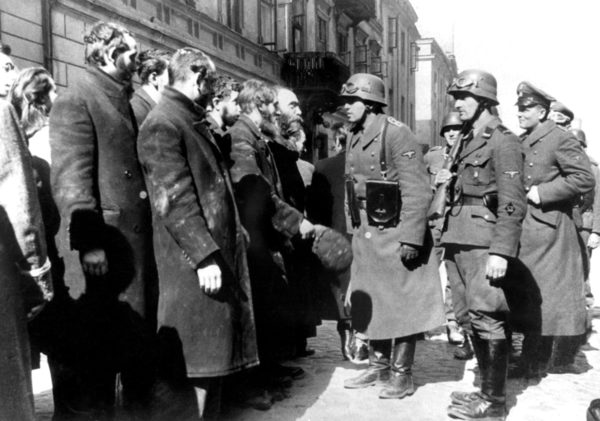
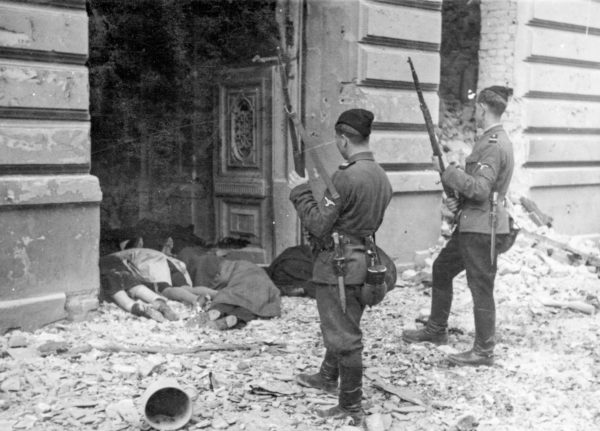
Do not confuse the Warsaw Ghetto Uprising with the “Warsaw Uprising” of 1944. On 1 August 1944, the Polish Home Army (underground Polish resistance fighters) began their attacks on the German army. The Soviets were advancing from the east and the Germans were getting ready to retreat when the battle began. The resistance fighters thought the Allies and in particular, the Soviets would assist them. Unfortunately, the Allies never lifted a finger to help and Stalin halted his army just outside Warsaw. His strategy was to have the Nazis fight the Polish and destroy the city. Most of the Polish resistance was anti-Communist and Stalin knew it would be better if the Polish freedom fighters were gone once the Soviets marched in. After the uprising ended in September, the Germans destroyed eighty-five percent of Warsaw. Unfortunately, the Poles went from five years under the jackboot of the Nazis to forty-five-years under the “occupation” of the Soviet Union.
Frankenstein
Josef Blösche (1912-1969) joined the Schutzstaffel or, SS after becoming a Nazi Party member in 1938. Drafted into the Waffen-SS (the military division of the SS), Blösche was transferred to Warsaw, Poland. By 1941, he had been assigned to one of the mobile execution squads of the Einsatzgruppen where he participated in the mass executions conducted in the Soviet Union. In mid-1942, Blösche was sent back to Warsaw reporting to the local Sicherheitsdienst or, SD (the intelligence agency of the SS). He became infamous for his role as a policeman in the Warsaw Ghetto and the subsequent 1943 uprising. Watch an interview about Josef Blösche here.
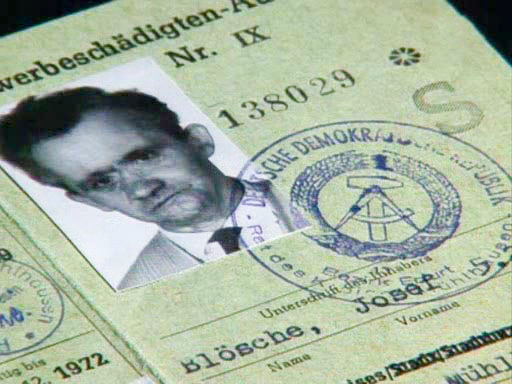
When the Nazis began deporting Jews to the Treblinka extermination camp, Blösche’s responsibilities included hunting down Jews who went into hiding. His cruelty was unmatched. In addition to often executing those he caught, Blösche’s daily routine included shooting random Jews for the sake of terrorizing the others. He would pick out Jewish women, rape them, and then execute them. His favorite targets were children and pregnant women. Blösche was one of the men surrounding Jürgen Stroop wherever he went and one of the principal Nazis who carried out the orders of his commanding officer. For his part in the suppression of the uprising and liquidation of the ghetto, Blösche received the German War Merit Cross.
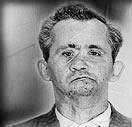
Warsaw was liberated on 17 January 1945 by the Soviet army and the First Polish Army. In May 1945, Blösche surrendered to the Soviets and became a prisoner of war. A year later, the Soviets sent him to East Germany where he worked in a labor camp. A severe accident left part of his faced deformed and shortly afterward, the camp was shut down and Blösche was released. He returned to live with his parents in the German Soviet Zone, married, and fathered two children. The infamous Stroop Report was published in the 1960s and included many images of Blösche. It is speculated that his facial deformity made it difficult to identify him as a war criminal. However, during the 1961 trial of a former SS colleague, Blösche was identified and his war crimes were finally laid out for everyone to see. The East German police began their investigation and Blösche was arrested in 1967 and put on trial in April 1969. He was found guilty and sentenced to death. On 29 July 1969, Josef Blösche was executed in Leipzig with a single shot to the back of his neck.
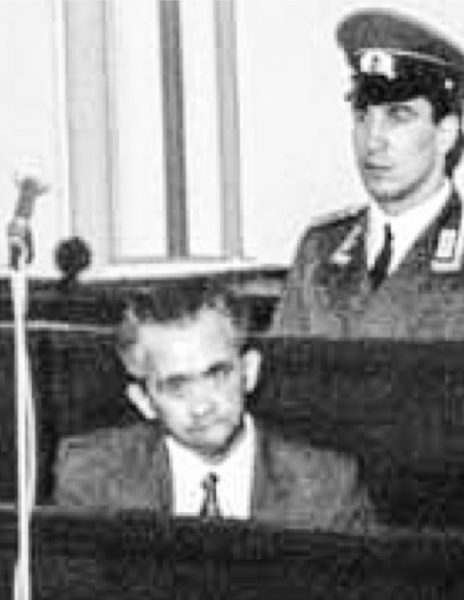
“The Jewish Quarter of Warsaw Is No More”
General Jürgen Stroop (1895-1952) was the SS commander of police in the Jewish Warsaw ghetto and every action taken by the SS was in response to his orders. Subsequent to the 1943 uprising, the SS chief for Poland, Friedrich-Wilhelm Krüger (1894-1945), ordered a report on the German suppression of the Warsaw Ghetto Uprising in the Spring of 1943. The report was intended to be a gift to Himmler. The person in charge of compiling the report was Jürgen Stroop. The report was formally called, Es gibt keinen jüdischen Wohnbezirk in Warschau mehr or, literally translated as “There is no Jewish residential district in Warsaw anymore.” However, it became known as “The Jewish Quarter of Warsaw is No More” or simply, “The Stroop Report.”

The report is 125 pages and contains fifty-three photographs (more photos were found in Stroop’s possession when he was captured by the Americans). The written account is a description of the month-long uprising by what Stroop writes as “Polish Bandits” and Jews. It details the actions Stroop and his troops took to suppress the uprising. The report is well documented by photographs taken during the uprising. It is likely the majority of the images were taken by photographers from the Propaganda Kompanie nr 689 although Franz Konrad took credit for some of the photos. Most of the images were taken during the final stages of the ghetto’s liquidation.
Stroop was arrested after the war and went on trial in what have become known as the “Dachau Trials.” He was convicted of murdering nine American prisoners of war. Stroop was sentenced to death but was extradited to Poland to stand trial for belonging to a criminal organization (i.e., the SS), liquidating the Warsaw Ghetto which resulted in tens of thousands of murders along with deportations to the death camps, ordering the execution of one hundred Poles on 16 July 1943, and finally, participating in the mass murder of Polish citizens after the German invasion in 1939. Throughout the trial and after his conviction, Stroop continued his belief in Nazi racial policies and told people he had no regrets killing Jews. On 8 September 1951, Jürgen Stroop was hanged in a Warsaw prison.
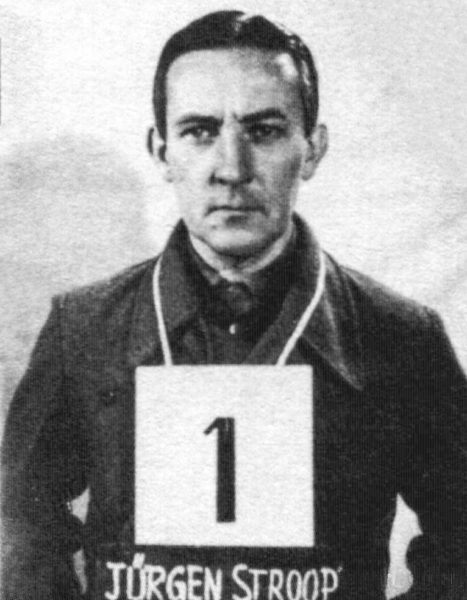
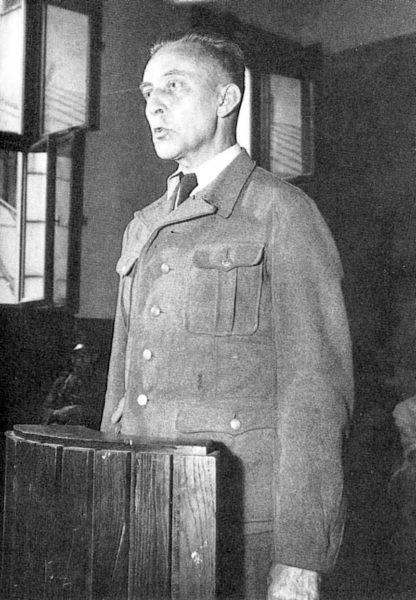
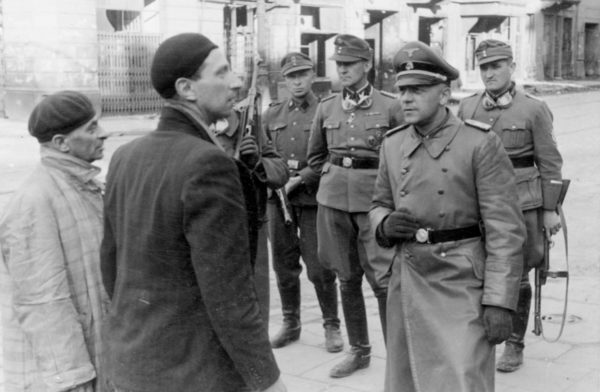
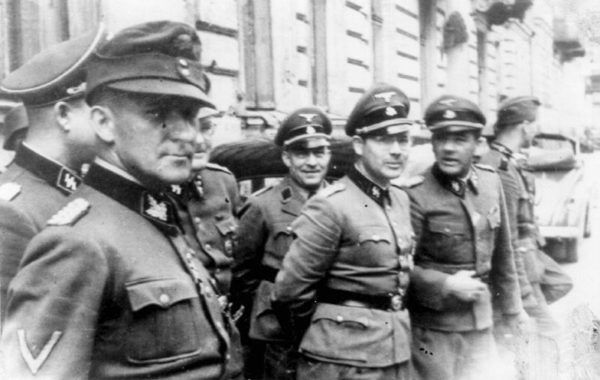
Only four copies of the report were made. Three were bound in leather and given to Himmler, Krüger, and Stroop. One unbound copy was left in Warsaw. After the war, only two copies survived; the U.S. National Archives and Records Administration is in possession of one while the Polish Institute of National Remembrance in Warsaw has the other. Himmler’s copy was presented as evidence in the Nuremburg trials as well as at Stroop’s trial in 1951.
What Happened to the Warsaw Ghetto Boy?
Who was the little boy with his hands raised seemingly leading the group out of the bunker? The only person in the photo who has been identified with one hundred percent certainty is Josef Blösche. There have been three separate possibilities of who the Warsaw ghetto boy was. Watch a video clip on Jewish Boy Surrenders here.
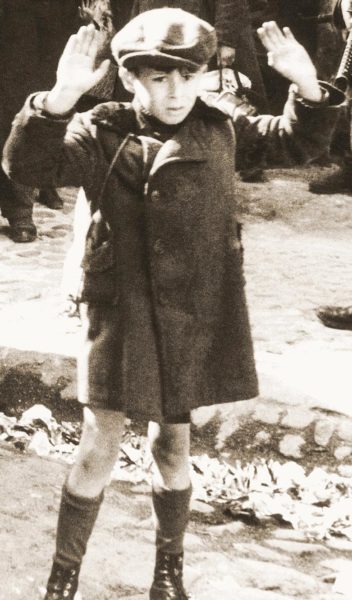
Artur Dab Siemiatek (1935-?) was identified in 1977 by Jadwiga Piesecka. He was the son of Leon Siemiatek and Sara Dab. Artur happened to be the grandson of Jadwiga’s brother and a year later, Jadwiga’s husband attested to the boy’s identity.
Tsvi Nussbaum (1936-2012) claimed in 1982 to be the child. Nussbaum at that time was a 47-year-old medical doctor living in New York. He recalled being arrested in Warsaw and ordered to raise his hands by a SS man with a machine gun. This claim has been dismissed because Nussbaum’s earlobes were detached while the boy in the picture had attached earlobes.
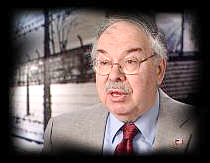
Levi Zeilinwarger (1932-?) was brought to the attention of the Ghetto Fighters House in Israel in 1999 by his father, Avrahim. He identified the woman next to the boy as his wife, Chana. Avrahim believes his family perished at either the Majdanek or Treblinka extermination camps. This claim has been diluted due to a lack of resemblance between Levi and the boy in the photo.
The fourth and most likely possibility is that we’ll never know the boy’s identity.
✭ ✭ ✭ Learn More About The Warsaw Ghetto Uprising and Other Stuff In This Blog ✭ ✭ ✭
Jakobs, Giselle. The Spy in the Tower: The Untold Story of Joseph Jakobs, the Last Person to be Executed in the Tower of London. Gloucestershire: The History Press, 2019.
McMeekin, Sean. How Hitler and Stalin Made Modern Poland. Wall Street Journal: 31 July 2019. Article link here.
Moczarski, Kazimierz. Edited by Mariana Fitzpatrick. Conversations with an Executioner. New Jersey: Prentice-Hall, 1981 (English translation).
Nicholson, Helen. The Knights Templar: A Brief History of the Warrior Order. Philadelphia: Running Press Book Publishers, 2001.
Raskin, Richard. A Child at Gunpoint: A Case Study of the Life of a Photo. Denmark: Aarhus University Press, 2004.
Stroop, Jürgen. The Stroop Report. London: Secker &Warburg, 1980.
If you read only one of these books, I suggest it be Conversations with an Executioner. The author, Kazimierz Moczarski, was a former member of the Polish Home Army and shared a cell with Jürgen Stroop for 255 days. During that time, he documented his conversations with Stroop and smuggled his notes out of prison. After being released by the Soviets in 1956, Moczarski wrote a manuscript for this book based on those conversations. Unfortunately, Moczarski died in 1975, two years before the book would be published in Poland. It is a chilling account about how a human being becomes a sadistic, hate-filled, and rampant serial killer. The ironic part is that one of Moczarski’s war-time assignments was to assassinate Stroop and with this book, he becomes Stroop’s biographer.
What’s New With Sandy and Stew?
We are in the process of training our new beagle puppy, Stella. I had forgotten how much time must be dedicated to training, playing, and putting Band-Aids on my hands. Good thing I got a head start on future blogs. I did that in anticipation of our upcoming trip to Egypt in October and November. Unfortunately, this training period puts me even further behind in my quest to complete the first volume of Where Did They Put the Gestapo Headquarters? A Walking Tour of Nazi Occupied Paris. But we’ll get it finished early next year provided Stella will sit still for more than fifteen seconds. Our motto is “A tired puppy is a good puppy.”
Also, thank you to those who inquired about our status here with respect to Hurricane Dorian. All I can say is that we dodged a massive bullet just like two years ago with Irma. My friend Jim once said it isn’t IF a hurricane will hit Florida, it’s when. Having been through numerous earthquakes while living in Southern California for thirty plus years and the five-hundred-year flood in Nashville, I’m not sure which of the many natural disasters is worse. I’m sure that eventually, we’ll have three of them under our belt.
Someone Is Commenting On Our Blogs
My long-time readers may remember that I’m fond of saying, “The world’s largest museum lies twelve feet below the streets of Paris.” I found an article in the BBC (digital) that caught my eye for several reasons. The article, The Secret Seat of the Knights Templar, is about the Templar’s European headquarters, which was built on what we call today, the Marais District. The author, Addison Nugent, points out the ruins of the “enclose du Temple” lie beneath the Square du Temple, a nice park where Parisians and others can sit in the shade and people watch. I liked her comment because it fit right in with my opinion about the “world’s largest museum.” I was also drawn to the article because, as many of you know, the third and fourth volumes of my series on Paris are entitled, Where Did They Burn the Last Grand Master of the Knights Templar? There are several stops in my books which Addison mentions in her article. If you’re in Paris and find the Knights Templar and the Temple interesting topics, you might want to check out the two medieval walking tour books. For those of you who don’t have the time or money right now to visit Paris, here is the link to Addison’s article.
If there is a topic you’d like to see a blog written about, please don’t hesitate to contact me. I love hearing from you so keep those comments coming.
Why Would You Want To Buy Our “Walks Through History” Books?
Simple.
You like to travel and experience history and historical events. You like to see original buildings that had a significant impact on the people and events of the history you’re engaged with. You want to know the stories behind the brick and mortar in front of you.
The walking tour books are meticulously researched so you can go directly to those sites and learn about the building’s history as well as an introduction to some of the more interesting people associated with it.
We Need Your Help
Please tell your friends about our blog site and encourage them to visit and subscribe. Sandy and I are trying to increase our audience and we need your help through your friends and social media followers.
Thank You
Sandy and I appreciate you visiting with us. We have some exciting things on the horizon and we’ll keep you updated as we go along.
Share This:
Follow Stew:
Find Stew’s books on Amazon and iBooks.
Please note that we do not and will not take compensation from individuals or companies mentioned or promoted in the blogs.
 Walks Through History
Walks Through History
Copyright ©2019 Stew Ross

